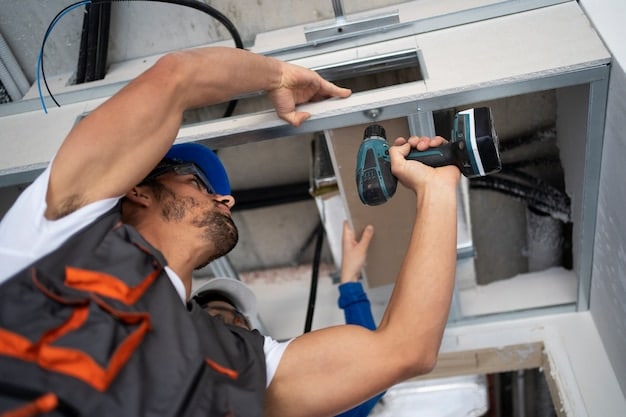When it comes to installing or upgrading a garage door, it’s important to approach the project with skill and precision. While professionals are well-equipped to handle the complexities, you can also tackle this task yourself by following these guidelines.
- Ensure Proper Sizing and Gather Tools Start by verifying that you have the correct door size and gather all the necessary tools before beginning the installation. This preparation will save you time and frustration during the process.
- Measure the Door Opening Use a tape measure to carefully record the length and width of the opening. These measurements will help you order the appropriate panels that fit perfectly into the opening.
- Select Panels Before purchasing the panels, use a level to ensure they are even and square. If needed, utilize shims, which are small pieces of wood that can be placed under the panels to create a balanced and secure fit. Shims are available at most home improvement stores.
- Install Vertical Tracks Depending on the specific type of garage door and the layout of your garage, the installation process for mounting the tracks may vary. Consider the manufacturer’s instructions and the garage’s configuration when installing the tracks. Opt for tracks with adequate height to accommodate the springs and opener, ensuring safe and full opening of the garage door. If unsure, seek advice from a local garage door specialist.
- Torsion and Extension Springs There are two styles of garage door springs: torsion and extension springs. These springs are attached to the top of the rollers above the door. Torsion springs are generally safer and less prone to breakage, although they may produce more noise compared to extension springs. Proper installation of the springs is crucial, so consult your garage door manual for instructions.
- Winding the Springs To prevent spring breakage, it’s important to wind the springs correctly. Each engagement of a tooth in the spring tensioner ratchet wheel corresponds to a 1/8 turn. This makes it easy to keep track of the required number of turns for your specific spring. Afterward, remove the spring’s pawl from the ratchet wheel and attach it to a 3/8-inch diameter winding bar. Position the bar firmly in the pawl and centered in the ratchet wheel. Rotate the winding bar to increase spring tension or pull it down to decrease tension. Repeat these steps as needed to adjust the spring tension, ensuring the door is not too heavy.
- Seek Professional Advice and Quotes Before making a final decision on a new garage door, it’s always a good idea to seek a second opinion and consult with professionals. Request a detailed quote that includes all customization fees associated with the upgrade. This approach will help you avoid unexpected surprises and unforeseen expenses.


